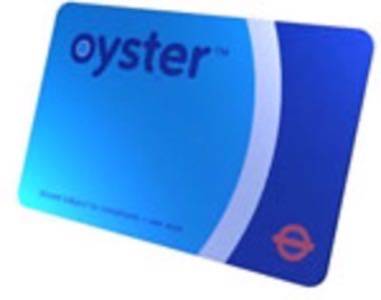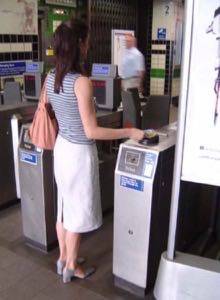The Oyster card is an RFID smart card used for electronic ticketing on London public transport services, notably the London Underground and buses. Other countries have similar smart cards. A couple that I’ve come across in real life recently were Boston’s CharlieCard and Wellington’s Snapper card. Some smart cards are used for other types of micro-payments as well as transport – for example Hong Kong’s Octopus card and Japan’s Suica card.

The Oyster Card and others like it are significant from a web technology perspective mainly because they introduce RFID technology to the masses; and this data will eventually end up being utilized on the Internet.
The way Oyster works is pretty simple: you purchase the card, buy tickets or concessions either at terminals or online, then swipe the card at a Reader when you take a train or bus trip. The Oyster card makes ticketing much more efficient for the consumer: no paper tickets, no handover of cash, little to no interaction with ticketing staff, speedier processing when entering the train station or bus. For the transport authorities, there are cost savings and instances of ticket payment avoidance / counterfeit are greatly reduced.

As the following statistics show, Oyster has been a very large scale deployment of RFID. The statistics are from a March 2008 presentation by Birkbeck College senior lecturer George Roussos:
- 10 million Oyster cards issued
- 5 million journeys a day
- 16,000 readers in stations
- 8,000 buses
- 2,600 readers at external retail points
- cash accounts for 4% today
Oyster Cards & The Web
Right now the Internet isn’t a major part of the Oyster Card. There’s a website for the card, where consumers can purchase cards and refill them (including an auto top-up option). But that’s the extent of the site’s functionality. [UPDATE: Andy Black comments: “You can [also] view your detailed journey history made over the past 8 weeks.”]
The Oyster card has many potential Internet applications, particularly in the retail area. For example you might be offered personalized shopping offers in future, if retailers had access to your travel habits. Of course you may not want retailers to have that data; and therein lies the problem. So far security and privacy have naturally been the main concerns for the Oyster Card and similar smart cards.
Nevertheless, enterprising British geeks have been exploring less serious applications for the Oyster Card over the past few years. The Tinker.it! team in London wrote a post earlier this year outlining creative uses for the Oyster card. One was an interactive exhibition that translated a user’s unique Oyster card id into a unique snowflake, which was then displayed on Tinker.it’s office window for passers-by to play with.
While there isn’t much of an Internet story yet for the Oyster Card, the fact that RFID chips and readers are so widespread in London (and for other smart cards in major cities across the world) means that there’s much more data being produced about people in their everyday lives. That data is destined for the Internet, to be re-used, at which point we will see some very useful applications arise… if the privacy and security concerns can be assuaged.

















